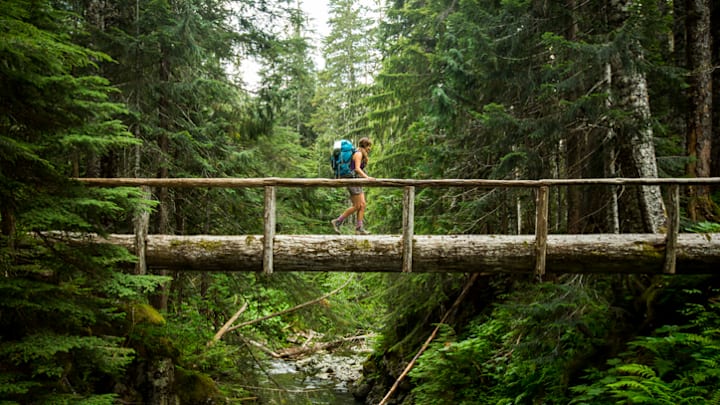The Pacific Northwest is home to some of the most breathtaking scenery in the United States, but that greenery comes at a cost. It rains in the Pacific Northwest, and it rains a lot. Despite the gorgeous landscapes and cosmopolitan cities, the western parts of Washington and Oregon get a bad rap for how gray and dismal they can be. But why exactly does it rain so much in the Pacific Northwest?
How the Jet Stream and Terrain Control Weather
The reason gloomy weather is so common boils down to prevailing weather patterns and the unique terrain that makes this part of the world so gorgeous. This stretch of land between Portland, Oregon, and Seattle, Washington, usually finds itself directly under the track of the jet stream. The jet stream is a fast-moving river of air that encircles the Northern Hemisphere right around the latitude of the U.S.-Canadian border.

Whenever the jet stream swoops to the south, creating a trough, it can generate low-pressure systems at the surface that produce heavy rain and high winds. These troughs and resulting low-pressure systems often intensify in the Gulf of Alaska and over the Pacific Ocean off the coast of Washington, allowing large storms to crash into the coast with ease. Most of these storms are run-of-the-mill rainmakers, lasting for a day or two before moving on, but some of them can be enormous and cause significant wind damage and flooding.
While the photogenic low-pressure systems that swirl into the coast are the driving force behind the Pacific Northwest’s seemingly endless rains, it’s the region’s terrain that locks in those dismal weather conditions. When moist winds blow inland with an approaching storm, the high terrain of the Cascade Range forces the moist air to rise into the atmosphere, enhancing the thick clouds and steady rainfall.
You Might Also Like:
- The Current That Carried Shipwrecked Sailors Across the Pacific
- What Is El Niño, and Why Does It Have Such a Big Impact?
- 10 Facts About Olympic National Park
How Much Does It Rain in the Pacific Northwest?
Even though it rains quite a bit along the northwestern coast, actual rainfall totals in the Pacific Northwest vary wildly from place to place due to changes in elevation. Some spots at high elevation right along the coast or along the Cascade Range can see more than 10 feet of precipitation in a single year, accounting for both rain and the equivalent amount of liquid in snowfall.

Seattle, Washington, and Portland, Oregon, each see around 36 inches of rain every year, which hardly makes these bustling metro areas the wettest in the country. Compare their rainfall totals to New York City’s Central Park, which measures nearly 50 inches of rain every year, and Mobile, Alabama, commonly one of the wettest cities in the United States; its proximity to the Gulf of Mexico gives it nearly 66 inches of rain every year.
The rain that does fall in Seattle and Portland, though, falls over a longer period of time. Between 1981 and 2010, both cities saw a little more than 150 days with measurable precipitation per year, compared to about 122 rainy days in New York City and just 115 in Mobile. This accounts for the Northwest’s reputation as the gloomiest part of the country—but makes for spectacularly green landscapes when the skies clear out.
Discover More Facts About the Planet:
A version of this story was published in 2017; it has been updated for 2025.
